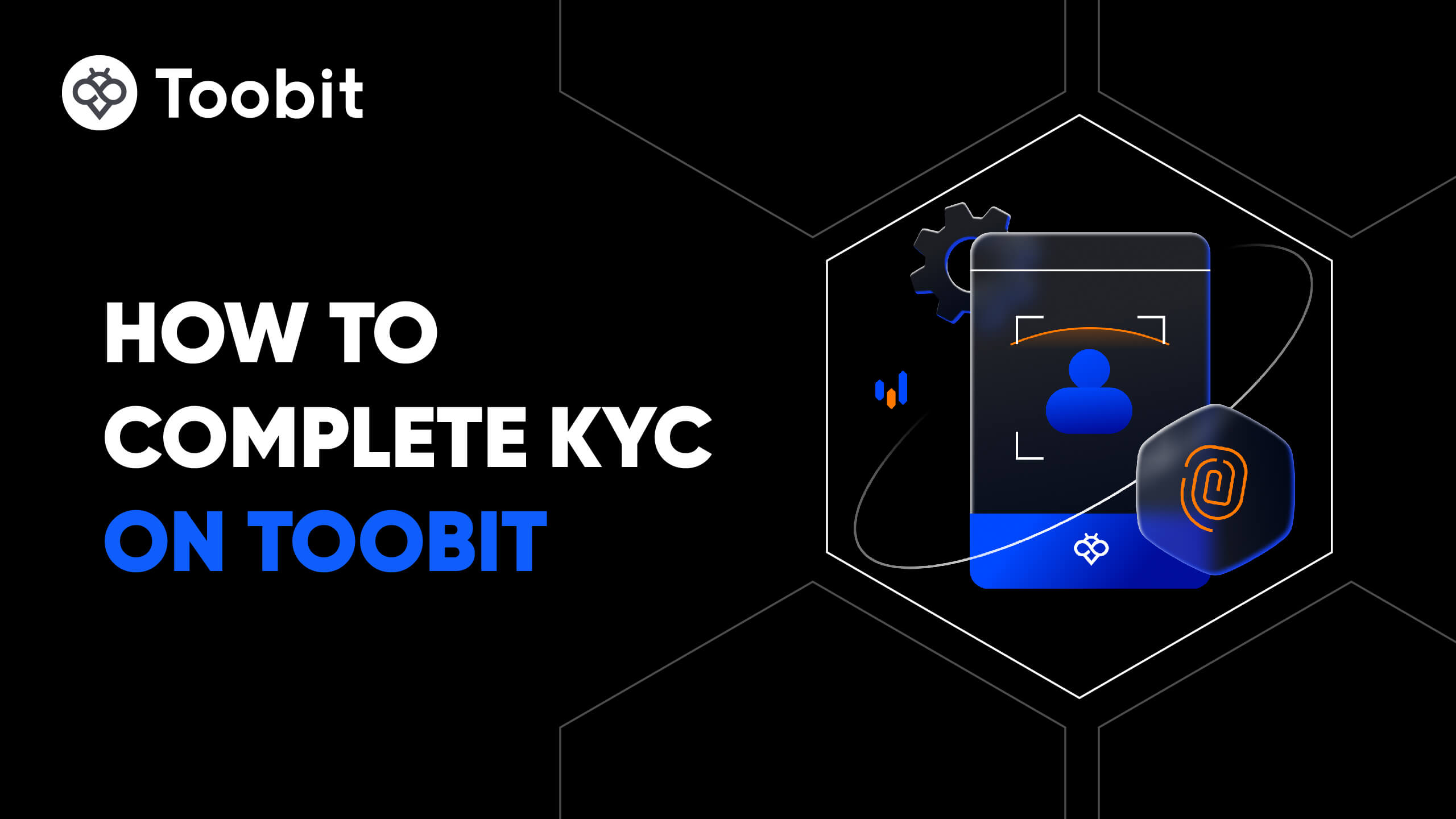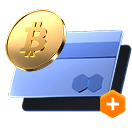XRP price
XRPXRP market info
Live XRP price today in USD
How much is 1 XRP worth in ?
About XRP(XRP)
XRP price history
Why does the price of XRP always fluctuate?
What factors affect the performance of XRP prices?
Global XRP prices
How to buy XRP
Create your free Toobit account
Sign up on Toobit with your email address/mobile phone number and country of residence, and create a strong password to secure your account.
Verify your identity
Complete identity verification by submitting your personal details and a valid photo ID.
Add a payment method and buy XRP (XRP)
Add a credit/debit card or bank account after verifying your Toobit account. Use multiple payment options to buy XRP on Toobit.
Trade XRP perpetual futures
After signing up on Toobit and buying USDT or XRP tokens, you can start trading derivatives, including XRP futures and margin trading to increase your income.
Join XRP copy trading with lead traders
After signing up on Toobit and successfully buying USDT or XRP tokens, you can also start copy trading by following Lead Traders.
Where can I buy XRP?
Buy crypto on the Toobit app
Sign up within minutes to purchase crypto via credit card or bank transfer.
Trade on Toobit
Deposit your cryptocurrencies to Toobit and enjoy high liquidity and low trading fees.
Video section — quick verification, quick trading

How to complete identification on Toobit and protect yourself from fraud
- 1.Log in to your Toobit account.
- 2.If you're new to Toobit, watch our tutorial on how to create an account.
- 3.Click on the profile icon in the upper right corner of the navigation bar, then tap on Identification page.
FAQ About XRP (XRP)
What is Ripple (XRP) used for?
XRP is the native digital asset of the Ripple network, designed to make cross-border payments faster and cheaper.• Payments and transfers: XRP allows the exchange of digital and fiat currencies over the Ripple blockchain. • Speed: Transactions on Ripple can be completed within seconds. • Low fees: XRP transactions cost less than traditional banking transfers. • Decentralization: The network operates without banks or payment processors, enabling more direct transfers.XRP is used by financial institutions and individuals for fast, low-cost, and secure global payments.Who are the founders of Ripple (XRP)?
Ripple (XRP) was founded in 2011 by three engineers: David Schwartz, Jed McCaleb, and Arthur Britto, inspired by Bitcoin. Their goal was to create a digital network for fast global payments. The XRP Ledger (XRPL) launched in June 2012. Soon after, the company NewCoin was founded and later renamed OpenCoin. In 2015, the cryptocurrency was officially named Ripple.Is XRP an inflationary or deflationary digital asset, and what is its maximum supply?
XRP is a deflationary digital asset. Its total supply of 100 billion tokens was created at the start (pre-mined), and no new XRP will be issued. The supply decreases over time because small transaction fees are permanently destroyed (burned) with each transfer. This deflationary mechanism helps maintain the stability of the Ripple network.What is the Ripple Consensus Algorithm?
The Ripple Protocol Consensus Algorithm (RPCA) is used by all nodes on the Ripple network every few seconds to maintain agreement across the ledger.Once consensus is reached, the current ledger is closed and becomes the last-closed ledger. If the process succeeds and there are no network forks, all nodes keep identical copies of the last-closed ledger, ensuring consistency across the network.How is the XRP Ledger network secured?
The XRP Ledger (XRPL) is secured using a federated consensus mechanism, where transactions are verified by independent servers called validators. This allows transactions to be processed quickly, securely, and transparently.With more than 150 validators currently active, the XRPL provides a reliable and efficient way to transfer value across borders. The consensus system ensures all nodes maintain a consistent and secure ledger without the need for traditional mining.How to obtain XRP?
XRP cannot be mined like Bitcoin or Ethereum. The total supply of 100 billion XRP tokens was created at inception, and Ripple Labs manages their distribution. XRP holders do not validate transactions or earn new tokens. XRP can be obtained in the following ways:• Buying on exchanges: Purchase XRP using fiat currency or other cryptocurrencies.• Receiving transfers or incentives: Get XRP through peer-to-peer transactions or promotions.• Trading other cryptocurrencies: Exchange other crypto assets for XRP on supported platforms.What are the potential use cases for XRP?
XRP is a digital asset with multiple applications on the XRP Ledger (XRPL):• Payments: Fast and low-cost cross-border transfers for individuals and businesses.• Tokenization: Creating digital assets and representing real-world assets on the ledger.• Decentralized finance (DeFi): Lending, borrowing, and other financial services on the XRPL.• Central Bank Digital Currencies (CBDCs): Supporting government-issued digital currencies.• Stablecoins: Enabling stable digital currencies and efficient transfers.Developers and businesses can use the XRP Ledger to improve transaction speed, reduce costs, and support innovation in the digital economy.How is XRP different from Bitcoin and Ethereum?
XRP, Bitcoin, and Ethereum serve different roles in the cryptocurrency ecosystem:• Bitcoin (BTC): The first decentralized digital currency, designed as a store of value and medium of exchange. It uses Proof-of-Work (PoW) consensus, with transaction times typically ranging from 10 minutes to several hours.• Ethereum (ETH): A decentralized platform for smart contracts and decentralized applications (dApps). Originally using PoW, Ethereum focuses on programmability and supporting complex dApps.• XRP: Created by Ripple Labs, XRP is designed for fast and low-cost cross-border payments. It was pre-mined, so mining is not required. XRP uses a unique consensus mechanism that validates transactions in 3 to 5 seconds, offering low fees and multi-signature support.While Bitcoin and Ethereum focus on decentralization and programmability, XRP emphasizes speed, cost efficiency, and cross-border payment solutions, making it well-suited for financial institutions and payment networks.What are some key indicators to consider when analyzing XRP's price?
When analyzing XRP price, consider the following factors:• Trading volume and liquidity: Assess market activity and ease of buying or selling XRP.• Market capitalization: Understand XRP’s overall market value.• Market trends and investor sentiment: Track broader cryptocurrency movements and investor confidence.• Upcoming developments or partnerships: Monitor announcements related to Ripple or XRP that may affect its price.• Technical analysis indicators: Use tools like moving averages and RSI to identify potential price trends.How does XRP's price compare to other major cryptocurrencies like Bitcoin and Ethereum?
XRP price often follows the overall cryptocurrency market but may not move exactly in line with Bitcoin or Ethereum.• Bitcoin (BTC): Considered a store of value or digital gold.• Ethereum (ETH): Known for smart contracts and decentralized applications.• XRP: Focuses on cross-border payments and banking partnerships, which can create distinct price movements.Investors should keep these differences in mind when comparing XRP with other major cryptocurrencies.What are some potential factors that could drive XRP's price up in the future?
Potential factors that could increase XRP price include:• Greater adoption by financial institutions and banks for cross-border payments.• New partnerships or collaborations with major companies.• Regulatory clarity and supportive government policies.• Positive sentiment in the cryptocurrency market.• Network upgrades or technology improvements that strengthen the XRP Ledger.What are some risks to consider when investing in XRP and how could they impact its price?
Key risks for XRP investors include:• Regulatory uncertainty that could affect operations or adoption.• Competition from other payment-focused cryptocurrencies.• Security issues in the network or related platforms.• Negative news or developments involving Ripple, the company behind XRP.These risks can influence XRP's price, so investors should monitor them and stay informed.How does XRP/USDT trading differ from other cryptocurrency pairings?
The XRP/USDT trading pair combines the stability of USDT with the speed of XRP's blockchain. Traders often use it for arbitrage and hedging strategies, taking advantage of USDT's stable value and XRP's price movements.What are some popular trading strategies for XRP/USDT?
Common trading strategies for XRP/USDT include:• Swing trading: Buying XRP when the price is low and selling when it rises, or the reverse, to profit from price fluctuations.• Scalping: Taking advantage of small price movements by quickly buying and selling XRP/USDT.• Trend following: Buying or selling according to the overall trend of the XRP/USDT pair.How can investors benefit from trading XRP/USDT?
Investors can benefit from trading XRP/USDT by taking advantage of arbitrage opportunities across different exchanges and by using the pair to diversify their cryptocurrency portfolio, helping to manage risk.Ripple price outlook for the future
Predicting Ripple’s future price is inherently uncertain, as cryptocurrency values are influenced by many external factors and market dynamics. Some analysts believe that wider adoption of Ripple’s technology, clearer regulations, and growing institutional interest could support higher prices over time. Investors should conduct thorough research and due diligence before making decisions based on price forecasts.Is XRP a good investment now?
XRP’s investment potential depends on regulatory clarity and market dynamics. Key factors that could support its upside include:• Regulatory clarity: The resolution of the SEC lawsuit confirmed that XRP is generally not considered an investment contract when sold on exchanges. This reduces uncertainty and may allow U.S. exchanges to fully relist XRP, increasing participation from institutional investors.• Institutional adoption and utility: XRP is used in RippleNet for cross-border settlements, helping financial institutions access liquidity quickly and cost-effectively. Wider adoption by banks and payment providers could boost demand for XRP.• Potential for XRP ETFs: Legal clarity has led to applications for spot XRP Exchange-Traded Funds (ETFs). If approved, these ETFs could attract significant capital from both institutional and retail investors, similar to the impact seen with Bitcoin ETFs.Overall, XRP offers opportunities through regulatory progress, growing adoption, and potential ETF catalysts. Investors should weigh these potential benefits against market risks.What is the fundamental problem that the Ripple Consensus Protocol aims to solve?
The Ripple Consensus Protocol (RPCA) is designed to achieve fast, secure, and energy-efficient agreement on transaction order in a decentralized payment system. Unlike Bitcoin, which relies on energy-intensive Proof-of-Work (PoW), Ripple prioritizes speed, scalability, and low-cost transactions for financial institutions and cross-border payments.What are the key performance advantages of the XRP Ledger compared to Bitcoin or Ethereum?
The XRP Ledger provides high scalability and fast transaction processing. Its Federated Consensus mechanism allows transactions to be confirmed and settled within 3 to 5 seconds while handling thousands of transactions per second. This speed and capacity make the XRP Ledger suitable for high-volume, real-time financial applications.What is the primary role of XRP as a digital asset within the Ripple ecosystem?
XRP is the native digital asset of the XRP Ledger. Its primary role is to act as a bridge currency, enabling instant and low-cost liquidity for cross-border payments. Financial institutions can use XRP to convert one fiat currency to another instantly, eliminating the need to pre-fund accounts in multiple currencies.How is XRP mined?
XRP is not mined. Unlike Bitcoin, all 100 billion XRP tokens were created when the XRP Ledger launched in 2012. Transactions are validated using Ripple's consensus protocol, which is fast, energy-efficient, and does not rely on mining.What is the main purpose of XRP?
XRP is the native digital asset of the Ripple network. Its main purposes are to act as a bridge currency and a medium of payment. It has two key roles:• Transaction fee: A small amount of XRP (called a ""drop"") is destroyed with each transaction to prevent spam.• Collateral: A small reserve of XRP is required to hold open orders or positions on the ledger.XRP’s primary function is to provide fast, low-cost liquidity for cross-border payments and asset transfers.Is the Ripple consensus protocol secure?
The Ripple consensus protocol is designed to resist attacks. Its security relies on:• Validators following the protocol rules honestly.• Network participants selecting their Unique Node Lists (UNLs) correctly, ensuring that no more than 20% of validators in overlapping UNLs are malicious.Under this model, the network is protected against issues like double-spending. Because it does not rely on computational power, it is not vulnerable to 51% hash power attacks, though security depends on the honesty and careful selection of validators.What is the long-term price prediction for XRP?
Providing a long-term price prediction for XRP is highly speculative, and no model can guarantee future performance. Analysts and forecasting platforms consider factors such as:• Widespread adoption: The extent to which Ripple’s technology becomes a standard for cross-border payments.• Regulatory clarity: A clear and favorable regulatory framework in major markets, such as the U.S.• Overall crypto market growth: Broad growth and increased participation in the cryptocurrency market, which can influence XRP demand and price.Predictions can vary widely. Investors should not rely solely on forecasts and are encouraged to conduct their own research and consult a qualified financial advisor.Why is the XRP price different across various cryptocurrency exchanges?
Slight differences in XRP prices across platforms like Toobit, Binance, or Kraken are normal due to:• Market liquidity: Exchanges with higher trading volumes usually have more stable prices.• Supply and demand: The balance of buyers and sellers on a given exchange can cause minor price variations.• Trading pairs and fees: Differences in available pairs (e.g., XRP/USDT vs. XRP/USD) and fee structures can affect the final price.Arbitrage traders often take advantage of these differences by buying on one exchange and selling on another, which helps align prices across the market.Why does the XRP Price change so frequently during the day?
The XRP Price fluctuates constantly because markets trade XRP 24/7. Every executed buy or sell order, on different exchanges or across different time zones, influences supply and demand, which immediately affects the price.What does “circulating supply” mean and how does it relate to XRP Price?
Circulating supply” refers to the number of XRP tokens currently available in the market for trading. Because the circulating supply (~ 50.8 billion XRP) and the total/max supply (100 billion XRP) are publicly known, you can calculate market capitalization (circulating supply × XRP Price). That helps put the XRP Price in context of overall network value.What is the difference between XRP Price and Market Capitalization?
XRP Price reflects the value of a single XRP token (in USD or your local fiat).Market Capitalization multiplies that price by circulating supply, giving the total market value of all currently circulating XRP. It’s a useful measure to compare with other assets or to gauge overall network size.What can cause large short-term swings in XRP Price?
Large price swings often result from events like:Big “whale” trades (large amounts of XRP bought or sold at once)Sudden spikes or drops in liquidityRegulatory news or macroeconomic developmentsBroader crypto market volatilityBecause XRP has a large supply base, such swings can be more pronounced.Is XRP supply fixed, and how does that affect XRP Price long-term?
XRP has a maximum supply of 100,000,000,000 XRP, and a specified current circulating supply (≈ 50.8 B XRP) per official stats. This supply cap can help maintain scarcity over the long term, but circulating supply and lock-up/vesting schedules still affect actual market liquidity, which influences price.How does large circulating supply affect potential upside for XRP Price?
Because circulating supply is high (tens of billions of XRP), achieving very high per-token prices would imply an enormous market cap — which may be unrealistic unless adoption, demand, and utility scale dramatically. Therefore, supply size is a key factor in realistic price expectations.Can developments on the network (e.g. adoption for payments, remittances) influence XRP Price?
Yes. If usage of the underlying payment network, transaction volume, cross-border transfers, institutional adoption — increases, demand for XRP may rise. Higher demand with a limited total supply can lead to upward pressure on XRP Price.Why does XRP Price sometimes move even when no major news is announced?
Because crypto markets are highly liquid and 24/7, even small shifts in sentiment, trading volume, or algorithmic trades can cause price fluctuations. Market psychology, technical trading triggers, or large orders can move the XRP Price without any public announcement.How does the difference between “total supply” and “circulating supply” matter for XRP Price?
The “total supply” (up to 100 B XRP) shows all tokens that exist, but many may be locked, reserved, or yet to be released. “Circulating supply” reflects the amount actually available for trading. If more tokens unlock or enter circulation, supply increases, which may put downward pressure on XRP Price unless matched by demand.Can using XRP for payments or remittances support XRP Price long-term?
Yes. If XRP becomes widely used for international payments, remittances, or as a bridge currency, increased real-world utility and demand could support long-term price stability and potential appreciation, especially given the capped 100 B supply and partial circulating supply in active use.What role do macroeconomic and global financial conditions play in XRP Price movements?
Since cryptocurrencies trade globally, macroeconomic factors, inflation, currency devaluation, interest rates, regulatory changes, can influence investor appetite for XRP. Global events may drive demand (or sell-offs), affecting XRP Price even if network fundamentals remain unchanged.Why should I compare XRP Price with total market data like volume, supply, and demand before investing?
Focusing solely on XRP Price doesn’t give full context. Comparing price with circulating/total supply, trading volume, market cap, and demand metrics helps you understand whether price is supported by real activity or just speculation, which is critical for informed, long-term decisions.


